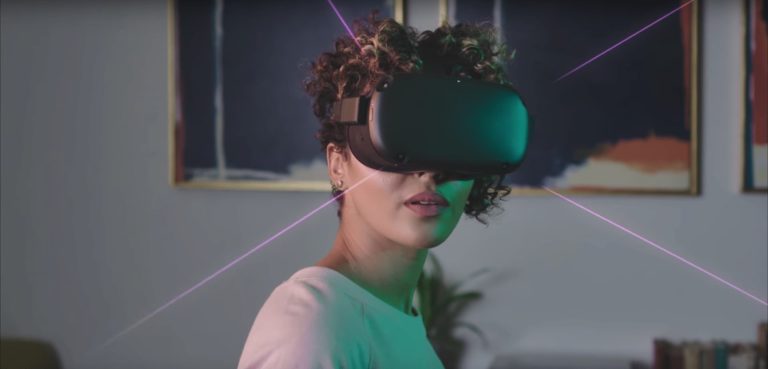
Crisis preparation is a field where anything goes. Sometimes, the worst you expect to happen does happen, and you have to make do with what you can. It’s hard to train people on exactly what to expect without them being in the field firsthand, but virtual reality (VR) can help people learn what to do in a similar situation. It can be a great learning tool to teach people what they might expect to see in the field.
How VR Is Used Right Now
When people think of VR, their minds often go to video games. So far, the primary purpose of VR is to transport the user to a fictional world so they can interact with it, either by sight or by using some form of controller to move around, talk to characters, and fight enemies.
Still, companies like Meta are branching out with grants and hoping to utilize VR and augmented reality (AR) to better the lives of all individuals, not just those who play games.
Right now, many government institutions, like the U.S. Department of Homeland Security, are running VR-based training to help immerse students in the field. As VR becomes more commonplace, it’s likely to become the go-to for crisis response training everywhere.
VR might seem complicated at first, but nobody can deny the benefits it offers to all who use it.
Transforming Crisis Response
VR is beneficial in several ways, from entertaining people to training new employees. Crisis preparation comes in many forms – whether it’s preparing for a natural disaster or learning how to deal with a stressful situation firsthand. Setting new and existing employees up to train in a virtual world can have some excellent benefits. Here are just three ways that’s playing out…
1. Offer Confidence and an Engaging Experience
By its very nature, VR is engaging. A program immerses you in an environment that may not look exactly like reality, but it can mimic what you might see around you, the sounds you hear, and the pressure you may feel in a given situation. It feels realistic, even if it’s not. Fabricated experiences in VR might prepare someone for what they’ll encounter in the field.
It’s more hands-on and engaging than listening to a lecture and learning in a class, so it bridges the gaps between the two learning environments. Plus, it can be used repeatedly — including when current crisis response workers are looking for a small refresher or the chance to brush up on their skills.
2. Enforce Methods and Better Reactions
VR can set an example for everyone involved. By immersing people in a simulated environment, they can feel the danger of a crisis situation without actually being in one yet and feeling completely unprepared.
One of the greatest things about VR is that you can make as many mistakes as you need to in a simulation while learning how to handle dire situations. It’s not as easy being in the field, so VR can aim to better people’s reactions under stress and pressure.
Similarly, VR can help train people so they don’t make costly mistakes. By testing out a situation in VR first, people will know how to handle it in the real world and won’t have to think on their feet – they’ll feel more prepared.
In a crisis situation, those new to the police force often make costly mistakes such as flinching as they anticipate the loud noises of gunfire, or they may become overwhelmed with fear in a dire situation. VR can help them avoid feeling this response to a paralyzing degree, allowing them to do their job and better respond to life-threatening conditions.
3. Provide Better Classes
All people who work in crisis response need to take a class on it. Often, these classes aren’t tailored to specific learners and go at a set pace. VR can change that by tailoring courses to a particular student. These students can learn at their own pace without worrying about not grasping a certain concept. Plus, VR simulations can make scenarios seem much more realistic than an example in a notebook, giving students a better idea of what they’ll face in the field.
With VR classes, people don’t have to worry about reworking their entire schedules to make it to in-person courses. VR programs can host classes at any time on the student’s schedule. That way, they can complete their required learning without sacrificing another part of their life.
Where VR Falls Short
VR might seem like a dream, but it’s still not for everyone. Some students might experience eye strain and headaches, which are known to be side effects of being in VR too long for some people. Though what happens in the virtual world might not be real, it can have real consequences on your body if you aren’t careful.
Because there will be students who can’t fully utilize VR, it can’t completely take over all forms of training. Physical classrooms must still exist to benefit students who can’t learn via VR.
While VR classes can cover everything from emergency response to hazard prevention, they still won’t work for some people, and that’s okay. Different learning styles require different approaches. Over time, the crisis sector will find a replacement for VR to keep those who can’t use it engaged.
VR Is the Future of Learning
While virtual reality might seem intimidating to some, others would jump at the chance to learn in the virtual world before applying their knowledge to the real world. Because VR can mimic the hazards of a real-life situation, it’s the best way to prepare first responders and other crisis situation workers for the worst-case scenario and inevitabilities of being on the job.
In the future, more and more facilities will likely implement VR into their training. With the ease of VR also comes difficulties, just like any technology implementation, but crisis responders are experts at adapting to challenging situations.
 April Miller is a senior writer at ReHack Magazine and editorial contributor at AR Insider. She specializes in VR/AR, IoT, and business technology. See her work here and follow her @rehackmagazine.
April Miller is a senior writer at ReHack Magazine and editorial contributor at AR Insider. She specializes in VR/AR, IoT, and business technology. See her work here and follow her @rehackmagazine.

